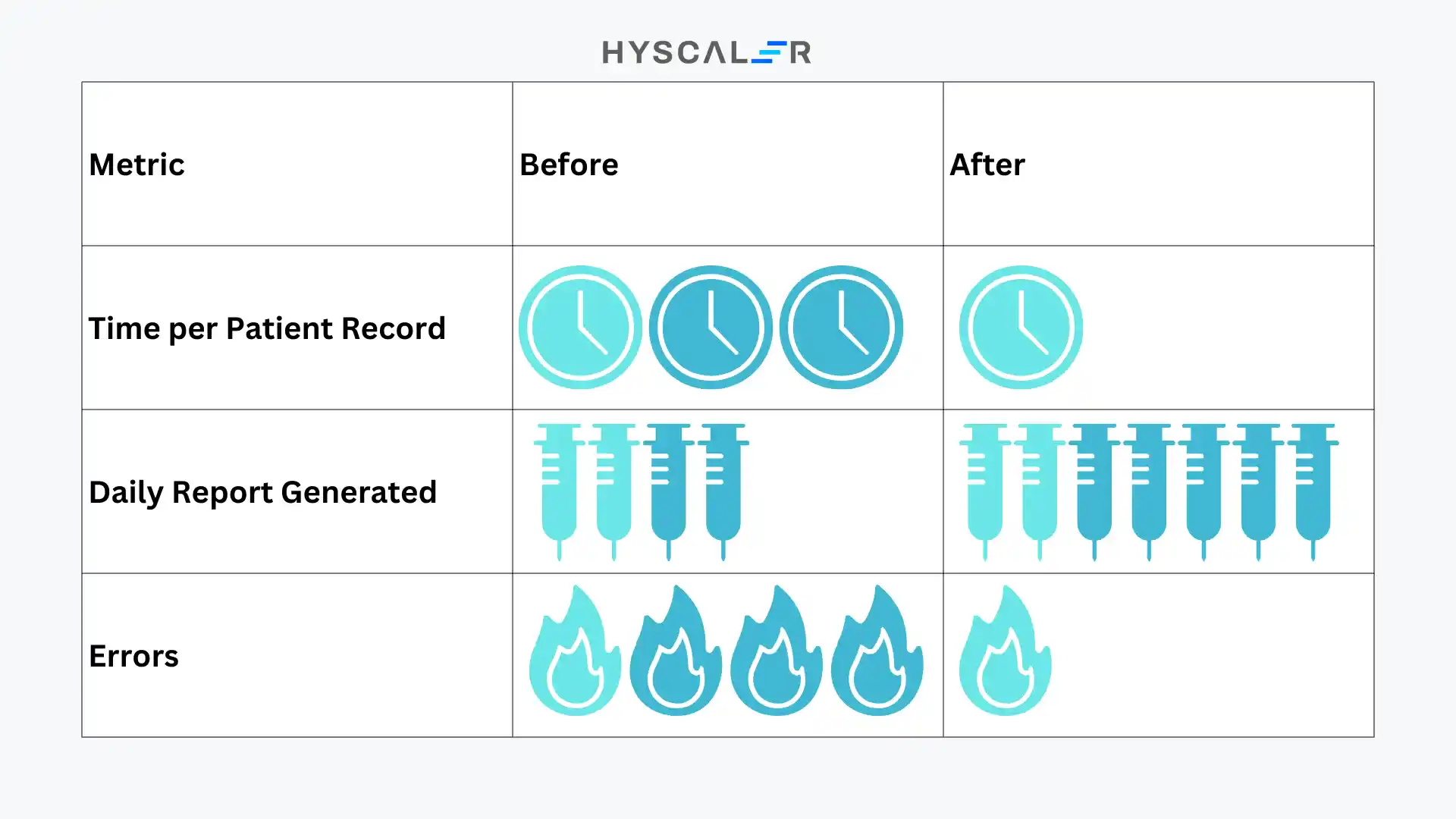Table of Contents
Client Location
USA
Industry
About the Client
Our client is a non-governmental organization (NGO) dedicated to combating tuberculosis (TB) among a large and diverse population.
Their requirement was for an internet-based management system that would make it easier to create and maintain comprehensive medical records for both TB patients and healthcare providers.
It also needed to allow for the tracking and evaluation of their progress and effectiveness.
The Challenge
The main challenge we faced was developing a system that seamlessly combined efficiency, user-friendliness, and accessibility, especially given our target end-users limited to no formal education and, in many cases, a lack of English proficiency.
Our primary goal was to keep the system as simple and intuitive as possible, allowing these users to easily locate patients and enter vital medical data.
With patients data and HIPAA compliance also a issue.
We needed to include robust data analytics, encryption and charting functionality, allowing our clients to assess the effectiveness of their efforts in depth.
Implementation
We began the process by gaining a thorough understanding of the client’s specific goals as well as the complexities of their operational procedures.
Following that, we meticulously designed a data model to encapsulate their specific needs, with regular input and validation from their dedicated team.
Our next project involved developing a sophisticated Electronic Medical Record System (EMRS), which was HIPAA compliant.
This system was designed to house, categorize, and meticulously manage the extensive records of tuberculosis patients and healthcare workers.
It seamlessly and securely stored patients’ vital medication information and could quickly generate comprehensive reports on demand.
Our unwavering dedication included ensuring cross-compatibility across multiple languages and devices, as well as an intuitively designed, user-friendly interface to facilitate ease of use.
Technologies
PHP, Linux, MySQL, Nginx, Yii Framework, Memcached
Features and Advantages – Healthcare Operations with EMR
EMRs are digital versions of traditional paper-based medical records that contain a patient’s entire medical history, including diagnoses, medications, laboratory results, and other pertinent health information.
EMRs are intended to improve the quality and efficiency of healthcare delivery by delivering accurate, up-to-date patient information in real-time, from anywhere, via secure networks.
EMRs provide numerous advantages to both healthcare operations providers and patients, including:
- Streamlining workflows: EMRs can reduce the need for paper-based patient record documentation, transcription, filing, and retrieval. This can save healthcare providers and staff time and resources while also reducing errors and data duplication. EMRs can also automate tasks like scheduling, billing, coding, and reporting, resulting in greater efficiency and accuracy.
- Improving patient safety: EMRs can improve patient safety by providing healthcare providers with alerts and reminders based on the patient’s medical history and current treatment plan. The system, for example, can notify a healthcare provider if a patient is allergic to a specific medication or if a test result is abnormal. EMRs can also help to avoid adverse drug events by detecting drug interactions, dosages, and contraindications.
- Enhancing data accuracy: EMRs can improve patient data accuracy and completeness by eliminating errors caused by handwriting, transcription, or miscommunication. EMRs can also ensure data consistency and standardization across various healthcare settings and providers. EMRs can also help with data validation and quality assurance by making it simple to review and audit patient records.
- Facilitating data sharing: EMRs can allow authorized healthcare operations providers, patients, and other stakeholders to share data in a secure and seamless manner. This can help with communication and care coordination, as well as clinical decision-making and evidence-based practice. Interoperability with other health information systems, such as electronic health records (EHRs), personal health records (PHRs), health information exchanges (HIEs), and public health registries, can also be supported by EMRs.
- Supporting data analysis: By providing access to large and rich datasets of patient information, EMRs can aid in data analysis and research. This can assist healthcare providers in monitoring and evaluating their performance, as well as identifying best practices and improving outcomes. EMRs can also assist healthcare providers in producing reports and dashboards to monitor key indicators and trends.
- Data Safety: Safeguarding patients data also becomes easier with EMR as it can be made compatible with different Compliance bodies.
These are some of the characteristics and benefits of Healthcare Operations with EMR.
Results

The EMR system was instrumental in increasing the client’s operational efficiency, precision, and clarity in managing tuberculosis cases.
Furthermore, it enabled them to meticulously monitor and assess patients’ post-medication progress, assess employee performance metrics, and scrutinize overall organizational outcomes all while being HIPAA compliant.
Conclusion
The Electronic Medical Records System (EMRS) was successfully launched and received positive feedback from both the client and the end-users.
The client was extremely pleased with our solution and formally recognized us as their ideal software development partner.
Want to improve healthcare delivery in undeserved communities? Contact us to build an intuitive, scalable EMR solution tailored to your needs.